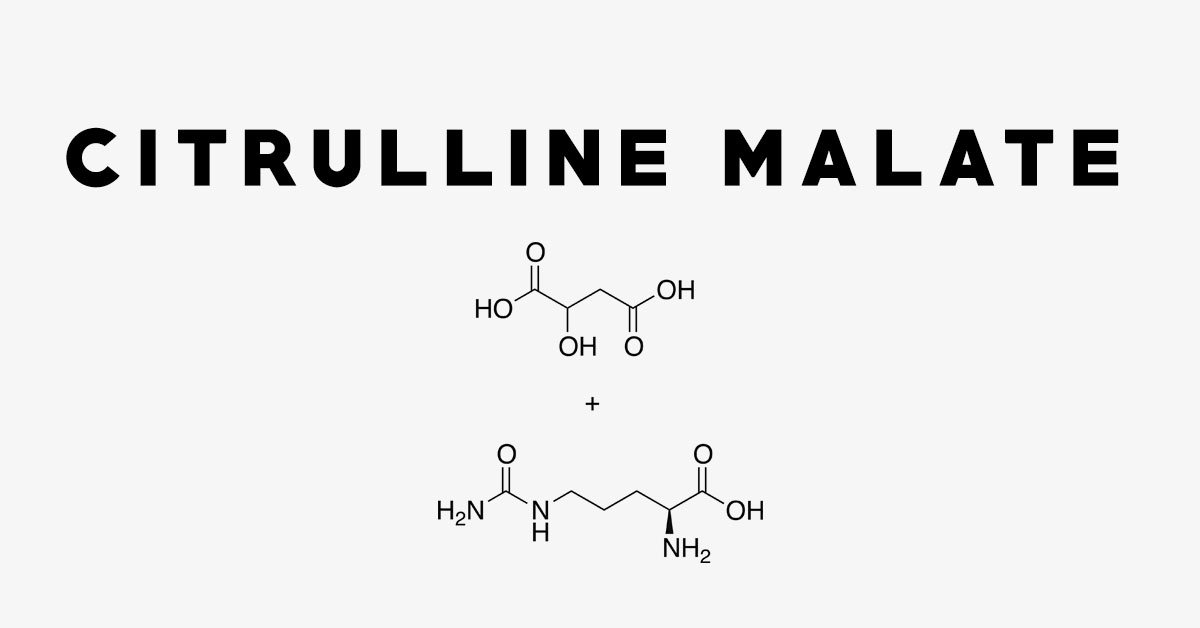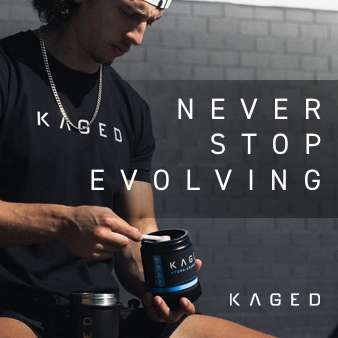
Citrulline Malate (L-Citrulline DL-malate)
Citrulline Malate is L-Citrulline combined with Malic Acid. Citrulline Malate is effective as a performance enhancing ingredient because of its ability to increase blood flow, endurance and may also provide assistance with muscular growth and recovery.
Uses of Citrulline Malate
Citrulline Malate is one of the most common ingredients in pre-workouts and pump products. You also see it as a standalone supplement quite often.
You’ll either find L-Citrulline (the free form amino acid), or Citrulline Malate in pre-workouts. The only difference is that Citrulline Malate has Malic Acid added to it. Malic Acid has its own benefits, which seem to compliment Citrulline.
Studies show that Citrulline Malate may aid in endurance and recovery. L-Citrulline on its own has studies showing it to increase nitric oxide. That’s why you’ll pretty much find it in the majority of pre-workouts these days. It’s almost expected, and for good reason.
Increased blood flow is why you will find this in the majority of all pump products these days. Citrulline converts to another popular amino acid called arginine. While some would say “just take arginine. Well, the issue with that is that Citrulline provides a much higher blood concentration of arginine after ingestion than straight arginine does. Therefore it makes a lot more sense to take Citrulline than take arginine. More arginine in the blood will result in dilated blood vessels, which is what we want of course. On that note, taking excess arginine in hopes of attaining a noticeable result may in turn cause some side effects, mainly diarrhea.
The “Malate” portion of this ingredient is actually what has caused debate. There is no company out there (that we know of) that uses a bonded form of Citrulline Malate (in which the studies that show it is superior to pure Citrulline were conducted on). Instead, they combine one (or two) molecules of Citrulline with one molecule of Malic Acid and "shake it up". Some companies argue that this is a way to make the products cheaper to manufacture, as Malic Acid is cheap whereas L-Citrulline is more expensive gram for gram.

Due to all of this, we suggest sticking with straight L-Citrulline when you can, although both should provide a solid pump depending on the dosages.
Interactions with Citrulline Malate
Citrulline Malate by itself will provide a noticeable pump, however it would be ideal to run it alongside other similar pump ingredients. If the goal is to have a well-rounded pre-workout that is not solely a pump formula, we like to see a few other ingredients that add to the endurance effect of this ingredient.
Citrulline Malate pairs well with ingredients like HydroMax (glycerol), Nitrosigine and even Pink Himalayan salt to help provide a good pump. Other great pump enhancing ingredients that pair well with L-Citrulline are Nitrates, Agmatine Sulfate and Theobromine.
Side Effects of Citrulline Malate
There are no known side effects with Citrulline, however Malic Acid may be different. Too much malic acid may cause headaches, diarrhea, nausea, and allergic reactions. This is why we suggest taking l-citrulline on its own or taking citrulline malate at a 2:1 ratio.
Recommended Citrulline Malate Dosage
As mentioned with straight L-Citrulline, you want that to be at 3g-5g of Citrulline.
At both ratios (2:1 and 1:1), we suggest 6g-8g of Citrulline Malate for optimal effectiveness.
Recommended Supplements Featuring Citrulline Malate
The following products contain Citrulline Malate at the recommended dosage, and are recommended supplements for Fitness Informant:





